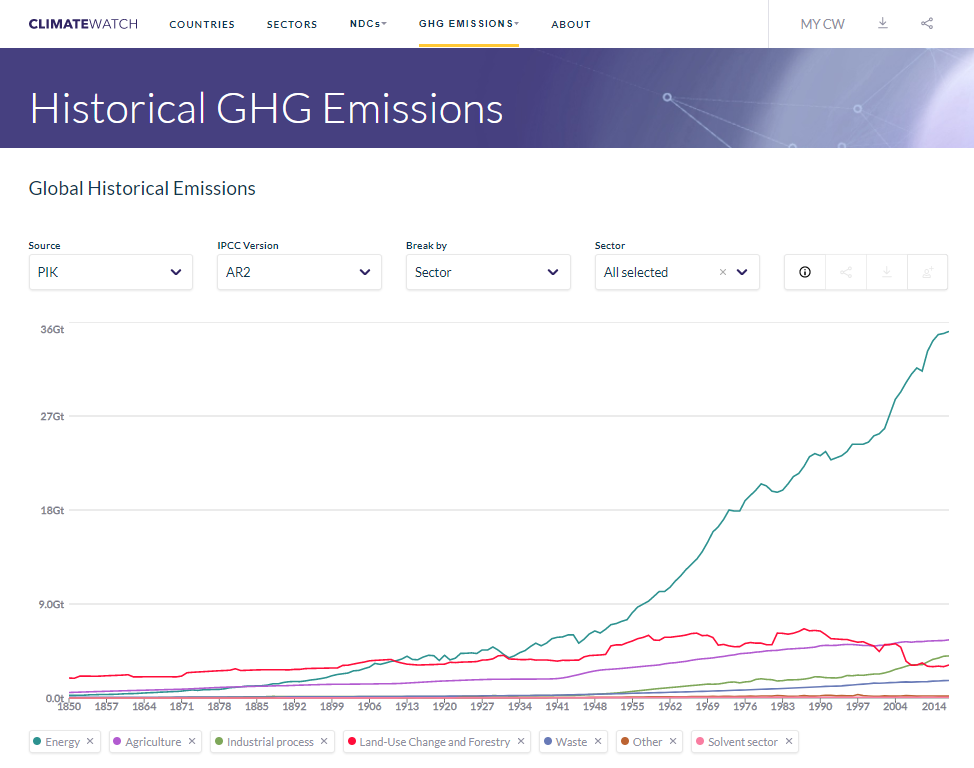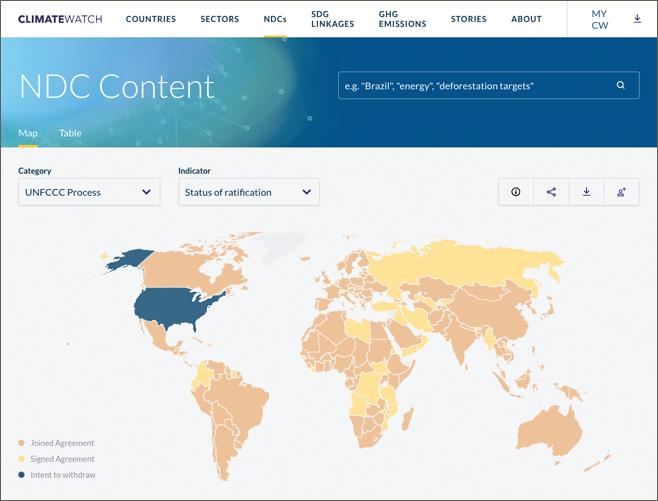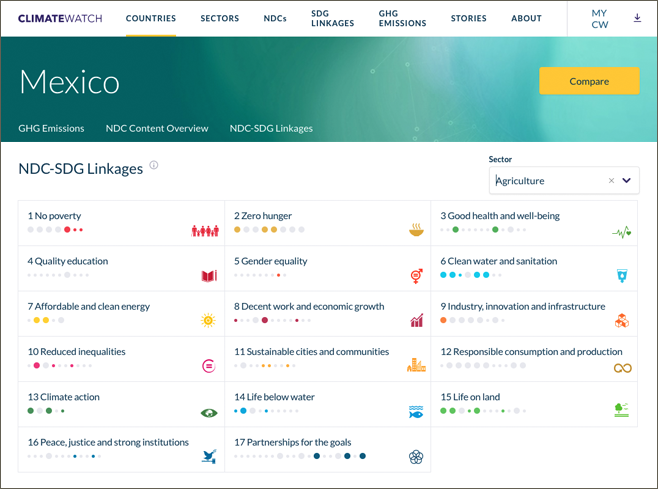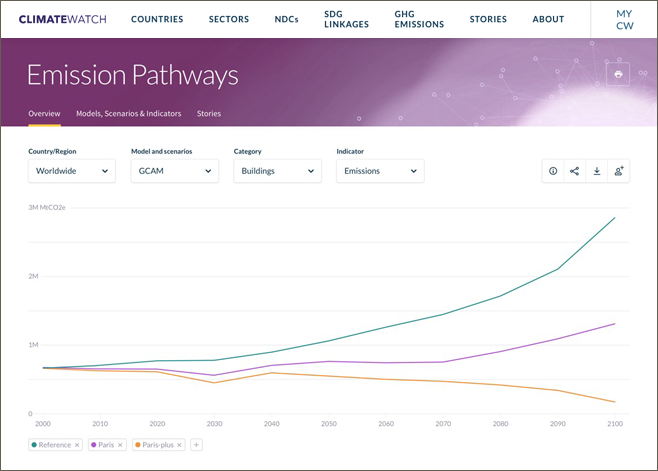Got Climate Questions? Climate Watch Has Answers
Negotiators and stakeholders headed to Bonn, Germany, for next week’s UN climate summit continue to confront a range of questions surrounding one essential query: How do we meet the imperative to lower greenhouse gas emissions now — quickly — to minimize the most severe impacts of climate change?
To address this challenge, World Resources Institute and partners launched Climate Watch, a new data visualization platform. Climate Watch brings together dozens of datasets for the first time in an online platform that lets policymakers, researchers, media and others analyze and compare national climate pledges under the Paris Agreement, access historical greenhouse gas (GHG) emissions data, discover how climate objectives can help achieve sustainable development goals, understand linkages between climate risks, poverty, vulnerabilities and readiness to adapt to climate impacts and use models to map new pathways to a lower-carbon future.
See for yourself how the various aspects of Climate Watch can help answer important questions about climate action and sustainable development:
1) How have global emissions changed?
Since the 1850s, when the industrial revolution was gathering steam, global heat-trapping emissions have grown from less than 1 gigatonne – 865 megatonnes or 1.9 trillion pounds — to 46.6 gigatonnes in 2015: 46,600,000,000,000 kg (93 trillion pounds) or about 1.4 million kg (3 million pounds) every second. While global emissions have begun to stabilize in the past three years and some of the top emitters have reduced their emissions, time is not on our side. We need to rapidly reduce global total emissions to have a chance at limiting warming well below 2 degrees C (3.6 degrees F) above pre-industrial levels to avoid the worst impacts of climate change, and every country needs to play their part. To help do that, Climate Watch makes it easy to analyze and visualize the latest available international greenhouse gas emissions data, how it has changed and what areas of the economy need the largest change.
2) What are countries doing to address climate change?
To build confidence and trust between public and private sectors and among countries, ensuring transparency and accessibility of national climate targets (known as Nationally Determined Contributions or NDCs) is essential to encourage ambitious climate action.
Climate Watch lets stakeholders explore all countries’ NDCs with a searchable database that makes it simple to learn from different countries’ plans, and identify areas for further investments.
For example, Climate Watch allows users to delve into what any country is proposing within their NDCs to do on mitigation, adaptation and finance, or see what economic sectors — such as agriculture and energy — different countries are focusing on to meet their emissions targets. The platform has identified around 400 sector-specific climate targets and found that about three quarters of national climate plans cover adaptation measures.
3) How can countries link climate goals with sustainable development?
Because climate action and sustainable development are two sides of the same coin, aligning climate targets (NDCs) and Sustainable Development Goals (SDGs) will be critical to decarbonizing economies and building climate resilience in a way that leaves no one behind.
Climate Watch identifies the links between countries’ NDCs and SDGs for 2030, finding that climate actions communicated in the NDCs are aligned with 154 of the 169 targets of the SDGs. The greatest alignment is found in the energy, forest, land-use and agricultural sectors, but with opportunities across all 17 SDGs. It’s the first time they have been mapped together, providing a resource to understand and maximize synergies between the agendas.
Mexico, for example, can address SDG 2 — end hunger and achieve food security — by improving watershed management and land conservation to ensure food security and access to drinkable water. These challenges are interrelated, and Climate Watch’s easy access to comprehensive data can help countries like Mexico take advantage of this integrated approach.
4) What can countries do to reach their climate targets?
Climate Watch’s emission scenarios (available mid-November 2017) shows what more than 60 countries or regions can do through economic and energy policy, drawing from a variety of modeling tools, to chart a more ambitious path to reducing emissions and limit global warming.
In addition to national-level insights, Climate Watch users can explore how temperatures might change under different emission trajectories. For example, the Global Change Assessment Model shows that if current national targets under the Paris Agreement were achieved, they could limit warming to 2.8 degrees C (5 degrees F).
The Bottom Line
With analytical tools and access to the latest climate data, Climate Watch is a powerful tool to help countries meet the climate challenge. The platform will continue to improved and expanded over the coming years, with new tools, more robust data sets and information about national policies and legislation – such as carbon pricing, climate finance, adaptation measures and more.
Try Climate Watch out for yourself and see which of your climate questions it can help answer. Visit www.climatewatchdata.org.



